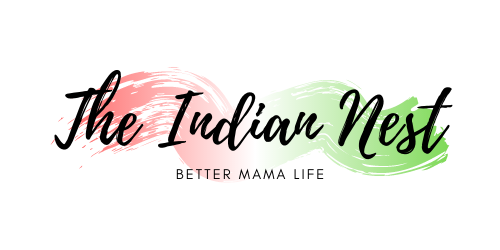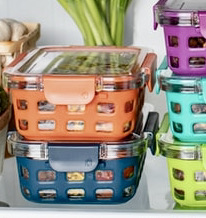Photo by Fathul Abrar on Unsplash
Do you bother about leftover food safety rules for your safe health?
Do you know how much time you should keep your leftovers food safe?
How many times have you peered into the refrigerator and discovered a container that’s been stashed for weeks and forgotten?
Have my leftovers been kept out of the danger zone?
We all love leftover food, and as a busy mom, sometimes I feel like a stress-free meal for a time. And it is a time and money-saving blessings.
I love my leftover sambar to have with my rice or with my dosa. I love it ☺️.
Even after a party, family gathering, or a simple dinner, indeed, we may have some amount of leftover food ready for a couple of days.
Yes! that will be my no-cook day.
Leftover food poisoning happens when you fail to manage leftover food safety rules
So it is essential to know when leftover food is safe to eat and when it’s not. It’s vital to understand when leftover food is safe to eat and when it’s not, to keep you and your family safe.
There are two completely different families of bacteria:
pathogenic bacteria, which causes foodborne illness, and spoilage bacteria, the kind of bacteria that cause foods to deteriorate and develop unpleasant odors, tastes, and textures.
Pathogenic bacteria can multiply in the Danger Zone.
The temperature range between 40 and 140 °F, but they do not generally affect the taste, smell, or appearance of food. So we cannot tell that a pathogen is present.
Spoilage bacteria can grow at low temperatures. Eventually, they cause food to develop off or bad tastes and smells.
Food poisoning is also called a food-borne illness caused by harmful germs such as bacteria in contaminated food.
Bacteria typically don’t change the taste, smell, or look of the food. You can’t tell whether your food is safe to eat. So if you have any doubt about food’s safety, it’s better to toss them away.
I really love my leftovers, and it’s a money and food saving. It allow us to have homely food without cooking everyday. That’s amazing isn’t it?
How to eat leftover food safely?
To keep our family from food poisoning, follow these simple leftover food safety rules.
Ten leftovers food safety rules
1. No heated leftover again heated leftover.
Once you heat your leftover, don’t heat it again. You get to heat your leftovers once.
Continually heat the leftovers thoroughly to 165 ºF. Do not heat the whole food container if you will have one serving, don’t keep the heated portion again in the refrigerator.
2. Handle leftovers in clean surroundings
Always wash your hands with soap and water before handling any cooked food, especially food you will store to eat later.
Use a clean container and another utensil to handle the food.
3. 2+2+4 rule
Once you have done your cooking, you can refrigerate your food freezer within two hours of cooking.
Store your food in dishes in two containers if its quantity is enormous. So They can cool safely. Then finish leftovers within four days. All these rules help to minimise the potential for food-borne illness to grow.
4. Do not stack leftover food containers.
Place foods in small containers, three inches or less height, and cover them adequately. Do not stack these containers right next to others. Leave some air space around them.
Using shallow containers and learning air space around the containers promotes air circulation and the best cooling of the food.
Always remain to don’t refrigerate or freeze cooked food in a large, deep container.
The fact is that the food in the centre of the container remains warm for a long time and can cause harmful bacteria to grow.
5. Always keep leftover covered.
Highly cover your leftover to reduce the air’s cross-contamination and prevent drying out your food. Take your time to store correctly.
6. Take the best quality storage containers.
To store your leftover, you may need a suitable quality storage container. I recommend keeping your food in glass, porcelain, or stainless steel.
You can also store it in a plastic container for storage or drinking. Make sure it’s BPA-free.
As we all know that BPA can release heat, so make sure not to heat your foods in plastic. Don’t allow plastic wrap to touch your foods in the microwave.
Always don’t drink from the water bottle after it has baked in the sun.
7. Proper refrigerator temperature
- To practice food safety, always quickly refrigerate perishable foods such as meat, poultry, fish, dairy, and eggs.
- Don’t let it sit more than two hours at typical room temperature more than 1 hour at temp above 32ºC.
- Uncooked foods, such as cold salad or sandwiches, also should be eaten or refrigerated quickly.
- Reduce the time your food is in danger which can help bacteria rapidly multiply.
It’s better to know about refrigerator rules and regulations and it’s proper food storage guidelines.
8. Re-heat temperature
How do I properly reheat my leftovers so I know they’re safe?
Ok! This is the most crucial thing everybody ignore.
Whenever you ready to eat your leftovers, reheat them in the store or a microwave oven for 74º C. Make sure to heat the leftovers thoroughly before consuming food
Leftovers retain their moisture and heat more evenly when covered. When possible, stir foods in the middle of heating.
Let our foods stand for a few minutes after taking them out of the microwave. Heat will continue to distribute during this standing time.
9. Know the shelf life
Every food has a different shelf life. Try to know about the shelf life.
Whenever you store your leftover in the refrigerator, you can put the date of each leftover on it. So you can able to track the food before it loses its taste and smell.
Label food and include the date of purchase or preparation and the respective ‘use by date.’ Adopt a First Expire First Out (FEFO) principle. Older food items that are stored in the refrigerator should be used first.
10. Proper refrigerator rules

Above shown are some rules and regulations that we must follow. To get these printable checklists, you can click here.
Refrigerator slows bacterial growth and prolongs the freshness of food.
Hence it is crucial to maintain the correct temperature of the refrigerator and keep then clean so that frozen and chilled food remains safe.
Conclusion
As I told you before, It’s a handy thing if we have our leftovers in the refrigerator. Just grab them, and heat it your homemade food is ready to eat.
You may probably lose a little nutrition the older most of your leftover gets, so keep that in mind.
A general rule of thumb is to use refrigerated leftovers within three to four days; frozen foods should be eaten within four months.
I hope you got ten excellent rules for keeping leftover, so you don’t get sick.
Stay safe and healthy!
with
❤️
Nasreen






 How to manage home without maid during lockdown
How to manage home without maid during lockdown
Leave a Reply